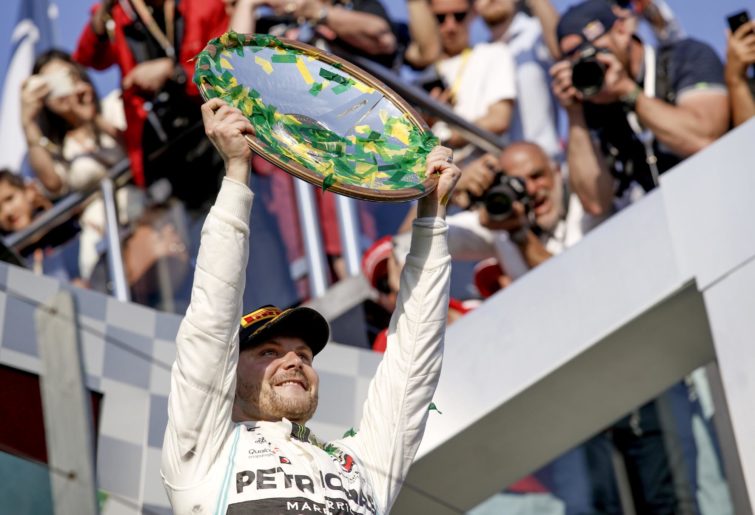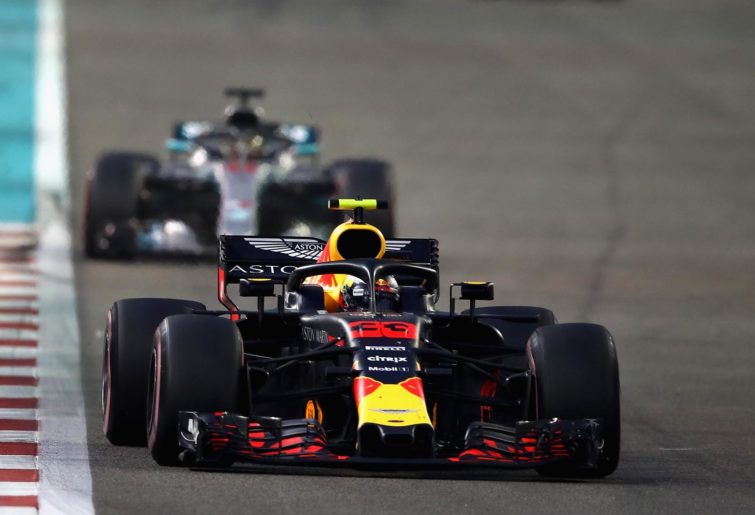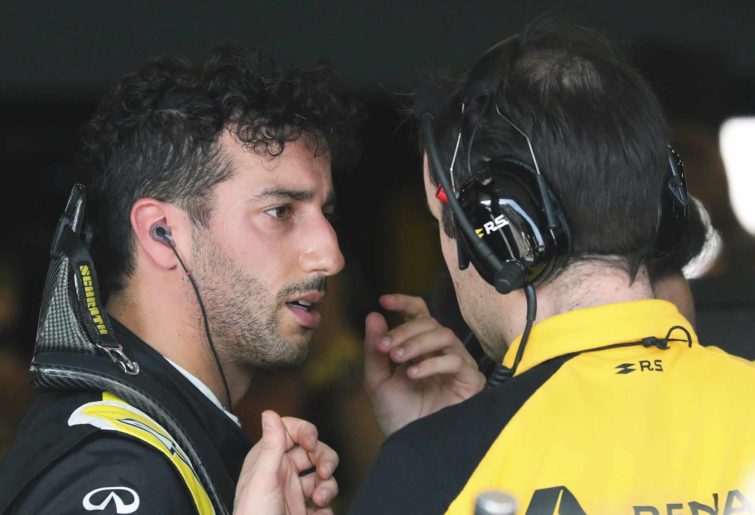'Welcome back': Reliving the last Chinese Grand Prix ahead of its much-anticipated return five years later
Five-years is a long time in motorsport, let alone the general state of the world – especially given the impact of the Covid-19 pandemic…
Opinion
After its annual winter hibernation, Formula One has roared back into life ahead of a new championship season, with pre-season testing having been completed in Barcelona.
Only six days were allocated in 2020 for winter testing and they were crammed full of drivers getting to grips with their new machinery and seeing exciting new innovations.
From one team applying the concept of the class leaders to their new development path, to making sense of how far behind Mercedes AMG’s rivals are – here are some of the key talking points from pre-season testing.
Mercedes introduces the DAS
While it was no surprise to see the six-time world champions atop the timesheets and also heading the lap leaderboard, what did capture the attention of all during testing was Mercedes’ introduction of DAS.
Dual-axis steering was first seen on the W11 EQ Power+ in the hands of reigning champion Lewis Hamilton on the second day of the first test. The footage revealed in an onboard lap, that upon accelerating on the pit-straight; Hamilton pulled the steering wheel towards him – which adjusted the angle of camber on his front wheels.
This immediately sent everyone into a frenzy, including rival teams who were both shocked and fascinated as to how this new system works and what advantage would the world champions gain from it.
Mercedes revealed little about such details and with good reason, though whether it will bring a significant advantage to their already almighty car remains to be seen. What is known is that in the 2021 regulations which were published last October – such a device is outlawed.
The innovators continue to innovate and apart from a power-unit gremlin towards the end of testing, Mercedes logged a whopping 903 laps and Valtteri Bottas achieved the fastest time on the softest C5 tyre – easily half-a-second faster than the next car.

(Mercedes AMG Petronas/Wolfgang Wilhelm)
How far behind are Red Bull and Ferrari?
With Mercedes already establishing an advantage with their evolutionary W11 chassis, the question now is where do their immediate championship rivals in Red Bull and Ferrari sit?
One can never be conclusive about pace in testing, given 12 months ago Ferrari fooled everyone to believe that they would hit the track at the season-opening Australian Grand Prix and blow the competition out of the park.
Red Bull certainly were a team that kept its cards close to their chest. 780 laps were logged for the Honda-powered RB16, which meant that the pair enjoyed a more reliable pre-season than in the past – though as far as their ultimate lap times are concerned, that is still an unknown.
What is key for Red Bull though, if they are to mount a credible championship challenge to the Silver Arrows, is that they must the ground running in Melbourne and the rest of the opening rounds of the season.
Ferrari, however, seems to have a lot more uncertainty about them exiting the preseason, with even team principal Mattia Binotto downplaying the team’s chances. Behind Mercedes, the Prancing Horse was able to achieve the second-most laps completed with a total of 844 – though their pace did not seem to convince anybody, and this may have something to do with our final talking point in this piece.
The SF1000, which will celebrate Ferrari’s millennium of races in Formula One this year, seems to have to scaled back on its power, which was its advantage in 2019. Along with balancing the aerodynamics, which was the major flaw in the predecessor SF90.
Again, Mercedes will be at the front of the field come Melbourne, but the question on everyone’s minds is where do Red Bull and Ferrari sit? At the moment, it looks more to be the former.

(Photo by Mark Thompson/Getty Images)
The Pink Mercedes
Racing Point endured a tough 2019 as they entered life after Force India. 2020 was always going to be the year where the investment from Lawrence Stroll and co would at last be seen on the track.
Indeed it was during the preseason and that was with controversy too, with the RP20 being revealed a photocopy of the championship-winning W10 EQ Power+. Rival teams in the midfield have been up in arms about the Silverstone team’s change of concept, with this yielding ‘the best’ car that journeyman Sergio Perez has driven in his Formula One career.
Their fastest lap time was still a second off the pace set by Mercedes on the C5 tyre, but a reliable package achieving 782 laps and solid race pace has forced many to rethink their midfield predictions with the thought that Racing Point could even be on the cusp of breaking into the top three.
Nothing in the current regulations prevent Racing Point from going down such a path and given that Haas when they entered the sport in 2016, were outsourcing their chassis entirely from Dallara and taking on the power-unit and other components from Ferrari.
It’s more so the spirit of being a constructor, which has irked most of the midfield comprising teams such as McLaren and Renault. The ‘Pink Mercedes’ will be another one to keep a close eye on in the opening round of the championship.
Another tight midfield race?
The midfield or ‘Formula One.5’ as it has been colloquially titled in recent years, has provided more intrigue than the head of the championship itself and that is no surprise considering how compact it really is.
Again, after testing it looks to be another tight affair between the likes of McLaren who were comprehensive in their fourth-place finish in the constructor’s championship last year and co. The Woking team enjoyed what they described as their best pre-season since 2014 and this was seen in the number of laps they recorded.
McLaren were third behind Mercedes and Ferrari and basically got on with the job which indicates they do have a strong base to work off. Where the uncertainty lies is with Renault, who with much expectation on them this season – managed to show their speed at the end of testing but weren’t high up on the lap count.
For a manufacturer team with a proven race winner in Daniel Ricciardo and upcoming talent in Esteban Ocon, another year being threatened by teams such as AlphaTauri or Alfa Romeo, may force a total rethink of their involvement in Formula One.

(Asanka Brendon Ratnayake/Pool via AP)
After a beleaguered 2019, Williams look to be on the path to recovery following a much more positive preseason. They were the first car to roll out on the opening day, which was a far cry from their situation 12 months ago and in the end completed more laps than Alfa Romeo and Haas.
Williams may still not be quickest, they could now be placed to threaten for the lower end of the points, which may cause the likes of Haas and Alfa Romeo to sweat a little, especially Haas, who endured a truncated testing period.
Ferrari’s engine settlement under the spotlight
As alluded to above, Ferrari’s power was something that became a talking point across the testing period and in particular at the backend of the final day in Barcelona – when the FIA released a statement regarding the investigation into the Scuderia’s 2019 engine.
A ‘confidential settlement’ was reached between the FIA and Ferrari regarding the legality of their power-unit in 2019, which was suspected to be gaining a power advantage during qualifying by tricking the regulatory fuel flow sensor.
Neither was it confirmed or denied that Ferrari’s power unit was legal in the statement, though the fact that following a technical directive at the United States Grand Prix, their mighty qualifying pace had disappeared. The SF1000 has also launched with a new engine and as seen across testing, the pace is not as strong as hoped.
Where the plot thickened was a week after testing, all seven of the non-Ferrari powered teams issued a joint statement which expressed ‘shock and surprise’ union over the private settlement reached between the FIA and Ferrari.
Citing the lack of transparency from the FIA, the seven teams in question may even pursue legal action unless ‘full and proper disclosure’ is revealed by the sport’s governing body.
Come Melbourne and the start of the 70th championship season for Formula One, this is one talking point that will still have many asking questions.